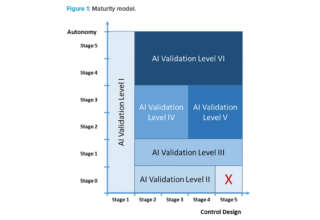
Turner College and Career High School information technology teacher Tracy Washington shows C.J. Harris Elementary students Lillie Swenson and Gabriel Chavez in Pearland how to install a computer part during a Career Day rotation Nov. 3. Computers are becoming indispensible in education, but do not necessarily help students become more analytical and creative.
Cellphones have become a necessary nuisance in thousands of American classrooms. Each semester, instructors restrict cell phone use during classtime. Sherry Turkle, M.I.T. professor and author of “Reclaiming Conversation: the Power of Talk in the Digital Age,” laments that even “at home, families sit together, texting and reading email. At work executives text during board meetings.”
These disruptions have long been in the making because technology has widened our attention gap. With each successive generation, the attention gap has developed sizable fissures — though not of Grand Canyon proportions.
The college experience has become one huge extension of online diversion complete with bells and whistles providing the illusion of “real time” learning. Conversation has been replaced with impersonal message boarding, chatrooms and Google searches.
But not all students have the same learning curve because some do need to learn in “real time.” At Palo Alto College, CTN (Catch the Next) instructors teach through conversation with reflective questioning, collaborative interacting and small group activities.
Turkle said it best: “These days, teaching by conversation is talked about as crucial (after all, the stated goal of putting content online in the flipped classroom is to have more dynamic in-class conversations). But at the same time, there is pressure to use technology in classrooms in ways that make conversation nearly impossible. And ironically, this technology is introduced as supporting ‘student engagement.’”
Even though technology is here to stay, some wealthier districts are increasing traditional face-to-face classes, interactive lectures, and human conversation while restricting the use of technology-driven software. Even Silicon Valley executives are sending their kids to technology-free Waldorf schools. Smaller classes and better teachers are the answer — not technology-driven curricula.
According to a report issued by the Organization for Economic Co-operation and Development (OECD), schools heavily invested in computers “have seen no noticeable improvement in reading, math and science.”
Beverly Amico, an administrator with the Association of Waldorf Schools of North America, explains, “One of the reasons parents working in the digital industry are choosing a low-tech, no-tech education for their children is that it teaches students the innovative thinking skills many employers desire.”
The innovative thinking skills most coveted by high-tech employers are not Google-searching skills but creator skills, where teams create new apps, infuse fresh ideas to age-old problems, and develop thinking clearly “outside the box.” Although new technology has exponentially increased visual-spatial skills, it has weakened the capacity to maintain inductive analysis coupled with imagination and reflection.
Silicon Valley executives know the addictive nature of their technology, which is why they limit their children’s use of them. And to counter this addictive nature, technology-free schools are popping up for kids up to age 14 funded by wealthy elites “concerned about the negative impact of social media, and disruptive behavior assigned with mobile phones and iPads in the classroom.”
These technology-free schools focus on cognitive and creative thinking exercises, use real books, and have small-group presentations to solve problems through reflective lessons. Making eye contact with peers, along with conversing intelligently about a topic, are highly prized attributes in addition to skillful writing. As technology increases, the human touch will be a valued commodity along with curiosity, creativity and empathy.
And what area of study accommodates this?
A humanities-liberal arts curriculum allows students to assume leadership skills and deliberate stock market fluctuations while at the same time pinpointing the differences between a Caravaggio painting and a Velasquez masterpiece, all the while whistling Vivaldi.
Perhaps it’s time to limit technology-driven classrooms to avoid the dazed, glassy-eye, data-overload stare in students.
Rafael Castillo, who teaches English and Humanities at Palo Alto College, is director of curriculum and instruction for Catch the Next, Inc.
[“Source-mysanantonio”]







